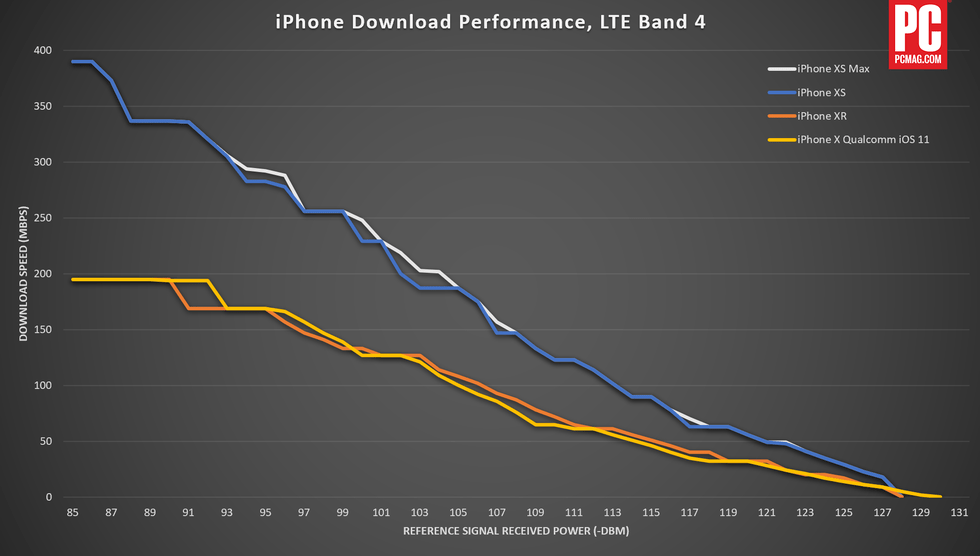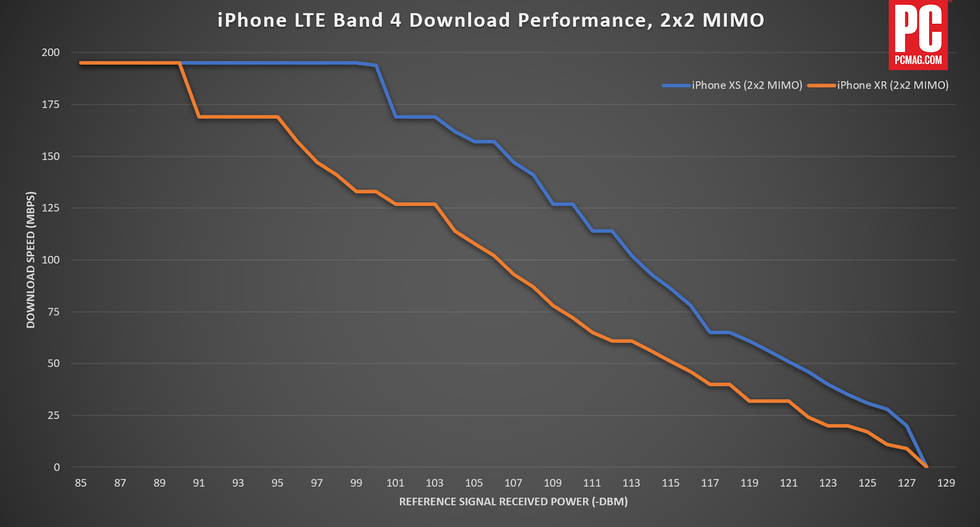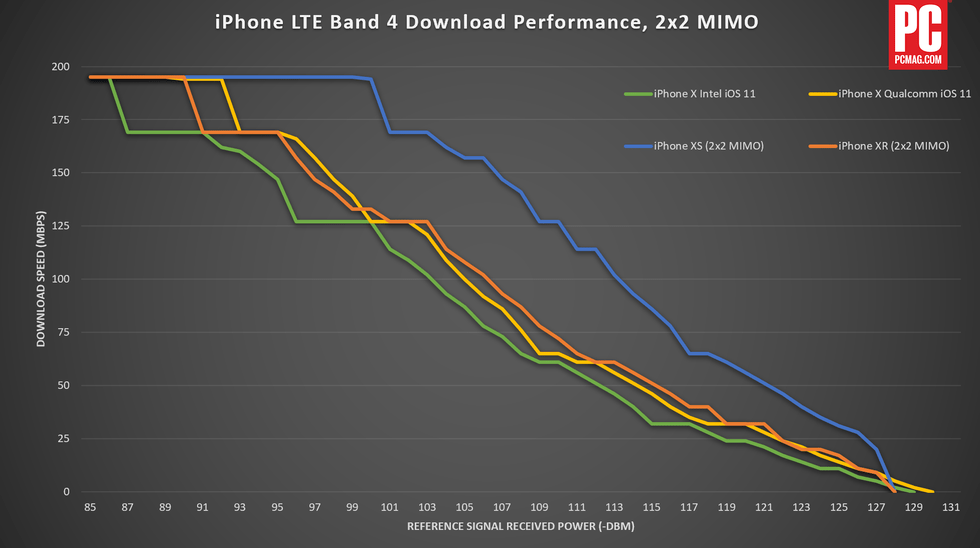O iPhone XR basically identical to iPhone XS in many ways, such as processing power, the TrueDepth camera system (front) and even the rear camera lens (even though the XS has two, the wide angle is exactly the same on both models).
Obviously, because it costs $ 250 less, I need to get something out of somewhere. One of these things involves the cellular connectivity of the device. While in XS we have Gigabit class LTE with MIMO 4 × 4 and LAA, in XR we have LTE Advanced. And what does this mean in practice?
THE PCMag conducted a test (together with Rohde & Schwarz, who provided all the technical equipment, and Cellular Insights, which has been doing this study since the launch of the iPhone 7) comparing the connectivity capabilities of the two devices. And the result was surprising.
Of course, for all this hardware to take effect, the operator in question needs to support such technologies. The tests in question, for example, were made in the USA using band 4 (the most common for bandwidth, although many others are used). The results may vary depending on the location, the band used, but there is a point to start without mentioning that a complete test like this would cost a lot of money and take a long time to get ready.
Analyzing the graph below, we see that the iPhones XS and XS Max have practically the same network performance, the differences are not big enough to be commented. The iPhone XR, on the other hand, looks much more like the results achieved by the iPhone X, which also has MIMO 2 × 2 instead of 4 × 4.

good to note, as the very PCMag he stated, that the maximum speeds tested in the laboratory do not always reflect those of the real world, after all, there are many other things that control the maximum speed of an LTE connection (interference, loss along the way, etc.). But pay attention to the right side of the graph, more precisely above -120dBm (which are considered very weak conditions, with a single signal bar or less). Under these conditions, the 4 × 4 MIMO really makes a difference!

By extending the weak signal conditions, we can see even more the significant difference between the iPhones XS / XS Max and the XR / X. It is important to note that there are two iPhone X models on the market, one with a Qualcomm modem (X16) and the other with Intel (XMM7480); in the test above, the PCMag used iPhone X with a Qualcomm modem, considered the best (more on that below).

The most surprising thing, at least for me, was this test (above) in which they simulated network conditions that do not work with MIMO 4 × 4, only with 2 × 2. The first thing you think the devices should have is very similar performance. But no: even in these conditions, the iPhones XS and XS Max achieved a far superior performance.

Here, another comparison showing even the difference of what the Qualcomm modem does on the iPhone X compared to the Intel one is something we already know.
· • ·
Good advances, right? But just remember a hypothetical scenario here: if you have an American iPhone XS / XS Max (models A1920 and A1921), you will not necessarily have better signal quality and download / upload rates than your old iPhone X or 8 ( just to illustrate a scenario). In theory, that would be the reality, but it all depends on the band you're connected to. If you have an American iPhone XS and in your home the band with the best signal at 28 (as we know, the American model does not support it), the iPhone X will most likely achieve a better performance (by having support for this band ).
It is always good to clarify, however, that you * will * continue to have access to 4G networks in Brazil with the American iPhone XS. What happens (still following the example above) that the XS will have to connect to another band, maybe with a signal not so good, exactly for this reason, in this specific situation, the iPhone X could achieve better download / upload rates.
However, in places where bands 3 and 7 are present (basically all regions of Brazil, since the release of band 28 is quite recent), the American XS will achieve better rates.
